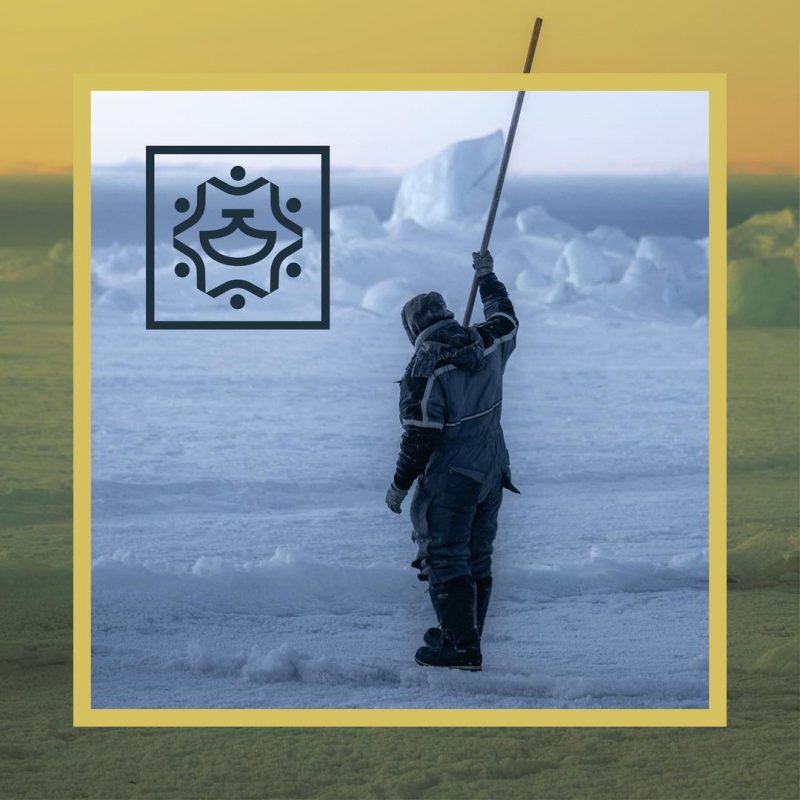News, Uncategorized
The seal: Part of traditions and cultural heritage
The seal: Part of traditions and cultural heritage
Seal hunting is central to Indigenous culture and allows communities to share traditional customs, skills, and values from generation to generation. For thousands of years, seals have been providing food, garment, heat, and light for people living in challenging Northern climates. Today, the seal continues to be an important part of the livelihood of the North and Indigenous coastal communities. It also allows Indigenous artists to participate in the cash economy by selling beautiful sealskin crafts.
Traditions and cultural heritage
Archeological evidence indicates that Indigenous People in Canada have been hunting seals for at least 4,000 years [1]. Seal hunting provided almost everything needed in daily life. Inuit people use seal skins to make warm clothing, use the blubber to heat and cook, and the seal meat and oil are consumed as food.
The traditional Inuit diet is rich in fish, whale, and seal meat. Among them, seal meat was an important source of fat, protein, and vitamins. Seal meat is often eaten raw, frozen, or dried. Labrador Inuit also used the seal oil and blubber as a dipping sauce for dried fish and meat [2]. Even today, seal meat is one of favorite country food for costal Indigenous communities. For many Northern communities, food security is an ongoing concern. A return to country foods such as seal meat, that is harvested locally, is one of the solutions to cope with the food shortage.
View this post on Instagram
Inuit people wear sealskin clothing and footwear that are aligned with the seasonal change. Sealskin is warm and water repellent and works well to protect against the cold and it used for different types of clothing throughout the year. Inuit people prepare seal skins in different ways for different conditions. The traditional way of preparing sealskin implies their ancestor’s wisdom and it has been a precious heritage for Inuit people. First, they remove fat from the sealskin and dry them right after. The skins will be stretched and dried on frames, helping to make the sealskins smooth and free from wrinkles. Those skins that are intended for boot soles are stretched less vigorously so that they can remain thick and less elastic. After the seal skin is thoroughly dry, it is extremely stiff, and this is the time when Inuit women would use the method of chewing, crumpling, folding and stomping on the seal skin to make it soft enough to work with, especially for garments. Today traditional sealskin clothing prepared in the traditional way remains important and popular among Inuit communities. The making and use of sealskin play a significant role in keeping Inuit cultural values and knowledge alive and sustaining and expressing Inuit identity.
Learn more: Traditional Inuit Preparation of Seal Skins
The Qulliq (Inuktitut: ᖁᓪᓕᖅ) is a type of low-intensity oil lamp made from soapstone and arctic cotton and moss wick fueled by seal or whale oil. Qulliq was the single most important furniture for the Inuit peoples in their daily life [3]. It was traditionally used by the Inuit people to warm up the home, dry clothes, and cook. It is still used now as a ritual teaching tool and as part of opening and closing ceremonies at important events. It has become one of the important symbols of Inuit identity and traditional culture.
View this post on Instagram
Learn more: The Qulliq – a Life Source
Inuit craft
The traditional way of life is one of the major content of Inuit art. Inuit people depend heavily on the seal for living. So, the sealskin naturally become one of the most commonly used materials in Inuit crafts. Today, sealskin accessories like slippers, mittens, earrings, brooches, and bracelets are getting popular in Canada.
Some artworks combine sealskin with other traditional Inuit materials like beads. She Was A Free Spirit’s Tuktoyaktuk Skies Tassel Harp Sealskin Earrings represent a perfect example.
These Sealskin Earrings are made of harp sealskin, delicas beads, sterling silver findings and copper disc. The colors found in the Tuktoyaktuk skies earrings are a reminder that we live in both the light and the dark and that colors can pop in both. The long sealskin strips add elegance to these unique earrings.
Sealskins are also combined with other animal skin and such as moose hide and fox fur. For example, this elegant Sealskin necklace was made by Stitched by April.
The V shape Sealskin resembles a tattoo, located on the forehead, which signifies entering womanhood for Inuit. The Silver fox fur adds a contemporary look and is backed with complimentary grey moose hide.
Sealskin craft conveys Inuit culture. The growing number of contemporary Indigenous seamstresses are taking traditional Inuit design to a new level, putting the functional material to create anything unique and fashionable. By showing and using the materials that their ancestors used, Inuit artists are keeping their history alive.
Proudly Indigenous Certification
The Circumpolar Crafters Network (CCN) was formed in 2019 to revitalize the traditions and production of authentic Inuit and Indigenous seal products. Inaugural members were from a number of circumpolar countries and were committed to working together, to share knowledge and skills, in a spirit of mutual respect for cultural traditions, and adhere to ethical, economic, and environmental principles. From this, the Proudly Indigenous Crafts & Designs project was created in the fall of 2020.
Proudly Indigenous Crafts & Designs (PIC&D) is working with recognized bodies to ensure consumers receive high-quality and authentic Indigenous seal products. Proudly Indigenous Crafts & Designs Certification certify seal products harvested by Indigenous communities and/or made by Indigenous crafters. It also certifies the products are promoted and sold on the PIC&D online store. You can rest assured that seal products that are sold in the PIC&D store meet strict criteria and guidelines ensuring their authenticity, standards of quality, and traceability.
Reference
[1] https://www.thecanadianencyclopedia.ca/en/article/sealing
[2] http://traditionalanimalfoods.org/mammals/seals-sealions-walrus/page.aspx?id=6392
[3] https://www.wikizero.com/en/Seal-oil_lamp


 Français
Français 简体中文
简体中文 ᐃᓄᒃᑎᑐᑦ
ᐃᓄᒃᑎᑐᑦ